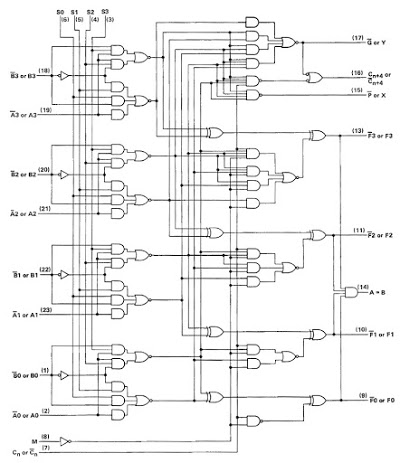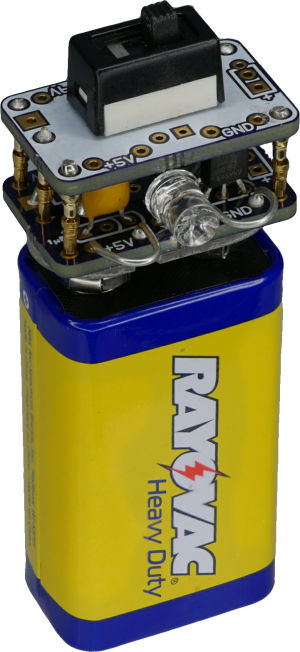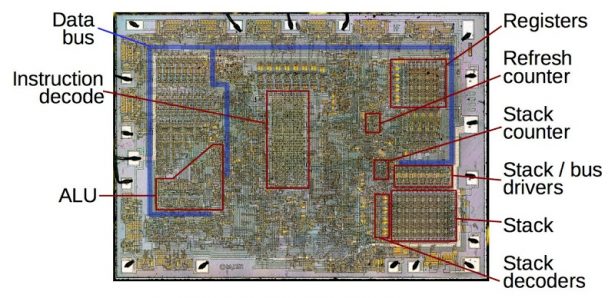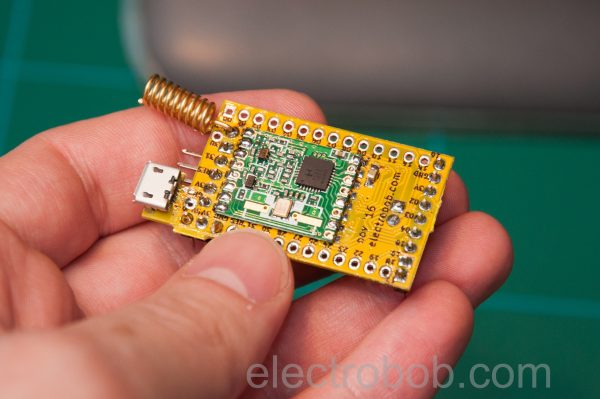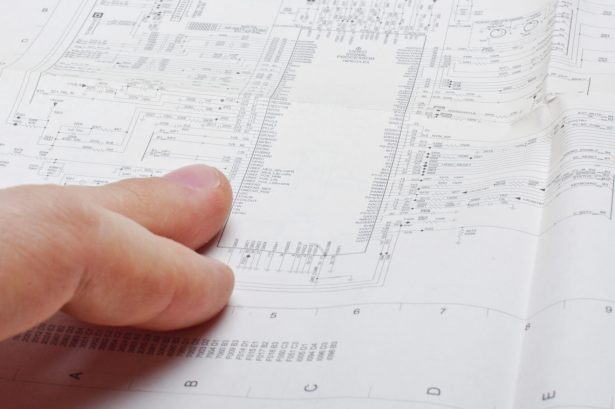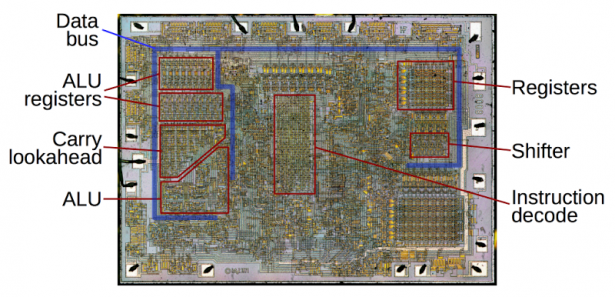Inside the vintage 74181 ALU chip: how it works and why it’s so strange
The 74181 ALU (arithmetic/logic unit) chip powered many of the minicomputers of the 1970s: it provided fast 4-bit arithmetic and logic functions, and could be combined to handle larger words, making it a key part of many CPUs. But if you look at the chip more closely, there are a few mysteries. It implements addition, […]
Inside the vintage 74181 ALU chip: how it works and why it’s so strange Read More »

